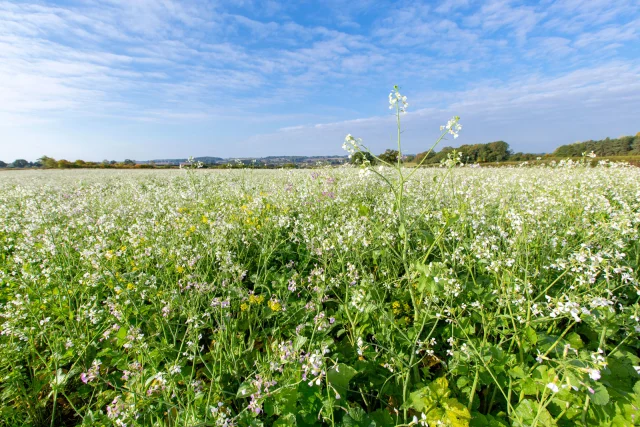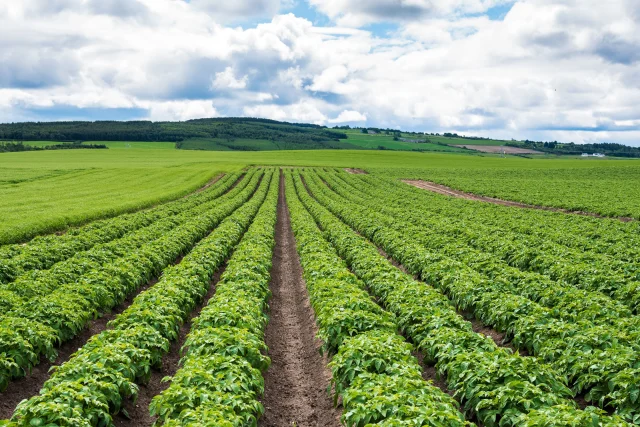Published on 16th September 2020
Pest Management
Understanding biologicals: the future of crop protection

Understanding the many forms of biological control agent is becoming increasingly important. To ensure everyone involved has a clear understanding of what constitutes a biological, Bayer has adopted a simple definition.
Understanding biologicals: the future of crop protection Content
What do we mean, or even understand, by the term ‘biologicals’? Just as with ‘pesticides’ the term has become a catch-all phrase used to describe everything from natural compounds, micro and macro-organisms and semio-chemicals. Understanding the many forms of biological control agent is becoming increasingly important: in several sectors, these products form the cornerstone of crop protection while in others their role is growing.
To ensure everyone involved has a clear understanding of what constitutes a biological, Bayer has adopted a simple definition.
Biologicals consist of microorganisms such as bacteria and fungi; beneficial macro-organisms (e.g. predatory mites); semio-chemicals (e.g. pheromones) or natural compounds (e.g. plant extracts) that can be used for the control of a wide range of pests and diseases while also making plants more productive.
At Bayer, we develop, and market biological products derived from plants, bacteria, and fungi that have unique plant protection properties, improve plant health, and promote crop yields. These biological products are an additional vital tool in sustainable agriculture, providing many benefits to growers and the entire food chain.
The move to biologicals reflects how those in the field of crop protection are responding to changes in the regulatory environment. These changes are in response to societal pressures to reduce reliance on conventional plant protection products but bringing them to market is no less demanding than with conventional plant protection products. Biologicals are assessed using the same rigorous processes and must meet the same high standards as employed in the approval of conventional products.
As manufacturers have risen to the challenge of developing products based on natural compounds. Over time the range of products has expanded and their performance gradually improved. In many cases they offer benefits beyond that of their conventional counterparts such as a zero- or one-day harvest intervals and are often exempt from rules on maximum residue limits.
Benefits of biologicals for growers and consumers
Improved residue and resistance management
Reduced risk of exceeding residue limits
Ability to manage the diverse residue requirements of the food chain
New modes of action help to reduce risks of resistance among pests and diseases
Higher consumer reassurance and satisfaction through promotion of more transparent production systems
Crop performance
Enhanced Integrated Pest Management (IPM)
Increased performance of spray programmes
Increased yields, crop quality and shelf-life
Improved crop health leads to greater tolerance of abiotic stresses such as drought and temperature fluctuations
Less harmful to beneficial insects helping to promote Mother Nature’s natural crop protectors
Supporting farm incomes
Greater management flexibility through reduced no-entry periods, flexibility at harvest and shorter intervals between crops
Wide compatibility with other crop protection products
Approved for use in organic systems
Multiple pathways for protection
Microbial products such as Bacillus subtilis strain QST 713 (Serenade ASO), Coniothyrium minitans strain CON/M/91-08 (Contans WG) and Bacillus pumilus strain QST 2808 (Sonata) provide crop protection and can promote plant health via multiple pathways.
Serenade ASO works with the plant. By colonizing the root as it feeds on exudates, it builds a dense biofilm around the root that has been demonstrated to lead to increased root growth and ability to search out nutrients. This has been found to lead to a stronger, healthier plant.
Contans WG is used for the control of sclerotia of Sclerotinia sclerotiorum and Sclerotinia minor when used as a soil treatment prior to planting any edible and non-edible crops. Whereas conventional foliar treatments target Sclerotinia disease in-season, Contans WG decreases Sclerotinia loading from the start. Based on a naturally occurring fungus, it neutralises and eliminates the source of the disease, limiting the potential for infection and spread through crops.
As a foliar spray, biologicals provide effective contact activity against diseases and pests to protect yield. The carboxylic fatty acids C7-C20 (FLiPPER) when applied to aphids and troublesome spider mites, provides control by disrupting the metabolic processes leaving the pest unable to feed. As it is derived from olive oil it is kind to beneficial species, is not subject to residue limits or harvest internals and as it holds numerous EAMUs it can be applied to a range of glasshouse, protected or field crops.
Building a programme for effective crop protection
Bayer’s chemical products are complemented by biological products to better meet today’s changing environment and the challenges of tomorrow. Biologicals have much to offer, but they are not yet at a stage whereby they can be used as stand-alone products to replace conventional products. Instead, they should be used as part of an IPM programme to reduce reliance on conventional products without having to compromise control.
Where growers have enjoyed success with biologicals it is based on a recognition of what makes them different. Efficacy levels are often ‘average’ compared with ‘high’ for a conventional while biologicals provide preventative protection in low to moderate pressure situations leaving conventional products to provide curative activity or act as a ‘pest re-set’.
As more biological products come to market and as our understanding of their potential to enhance crop protection improves, their use will increase as will our appreciation for how the solutions to the challenges growers face are often within reach.



